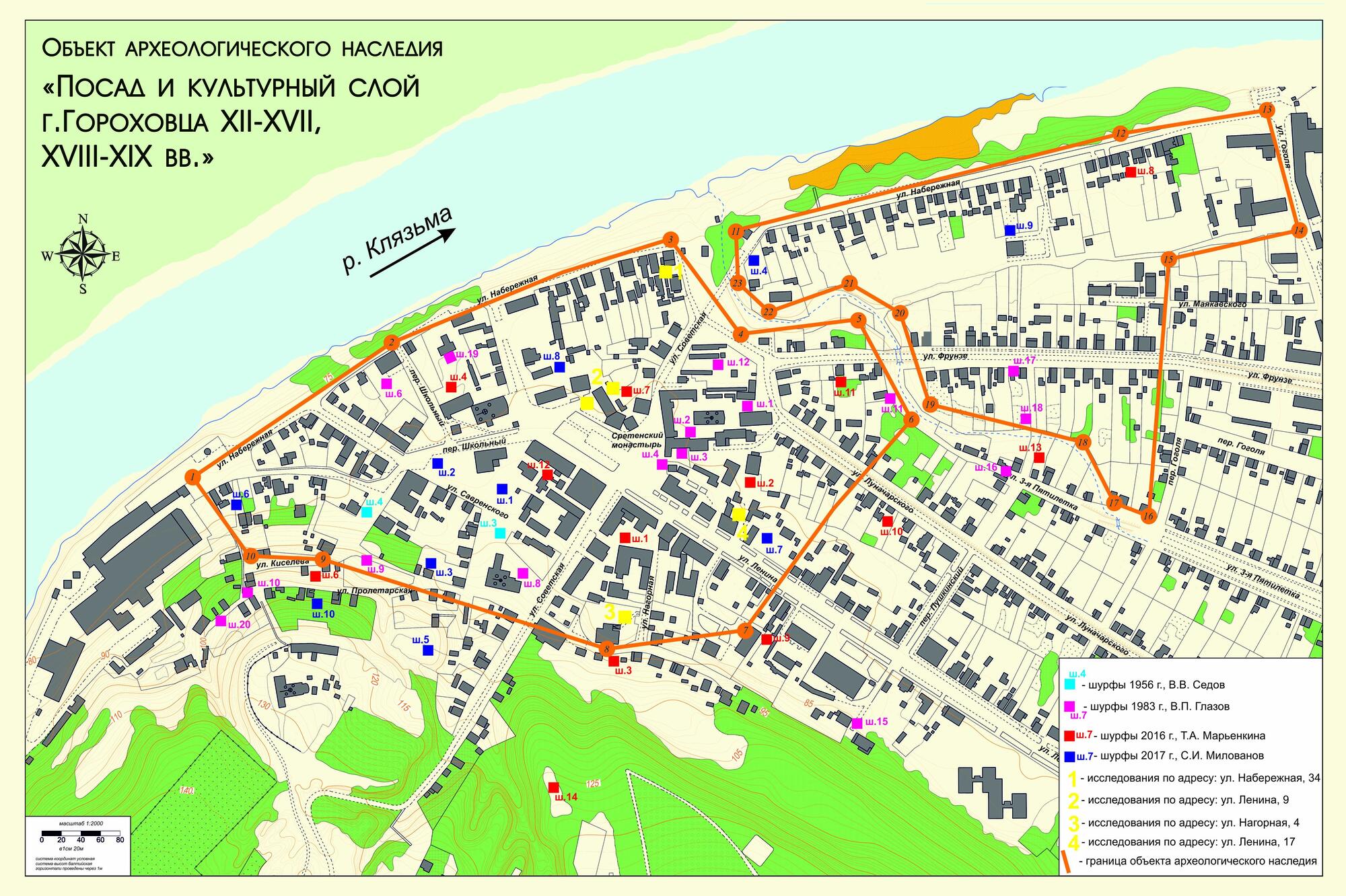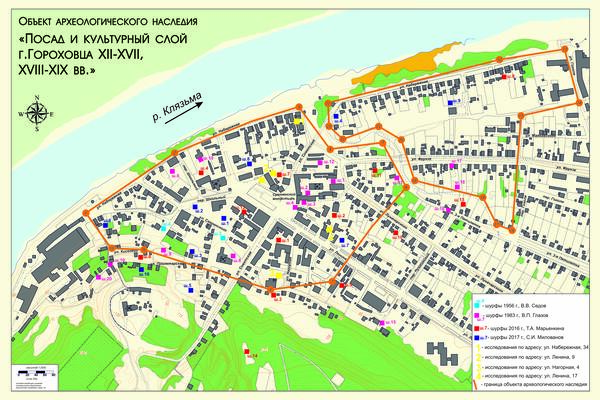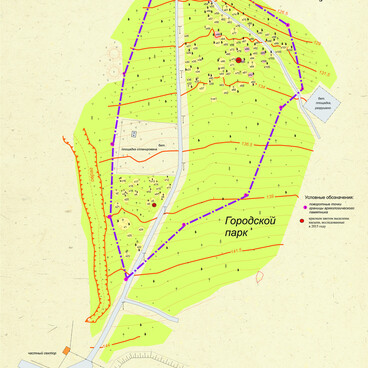The archaeological heritage site “The posad and the cultural layer of Gorokhovets, the 12th–17th centuries, the 18th–19th centuries” occupies the territory of the right bank of the Klyazma River. The height of the bank varies between 6 to 13 meters. The site has an irregular geometric shape in plan. It stretches for 1,163 meters along the Klyazma.
The site also occupies both banks of the Mogilenka River, which runs through from the southeast to the northwest. The total area of the site is about 29.1 hectares. Its oldest part is located on the left side of the river, where the cultural deposit formed between the second half of the 12th century and the 19th century was discovered. The right bank of the Mogilenka revealed the cultural layer of the 18th–19th centuries.
The cultural deposit formed in the Middle Ages is 20–30 cm thick and is filled with numerous fragments of clay vessels. During the excavation, two ancient Russian manors were partially explored. In addition, the cultural layer contained various fishing tackle — clay net sinkers and old iron fishhooks.
The archaeologists also came across objects that were characteristic of ancient Russian settlements: glass bracelets, a woven bracelet, an iron fire striker — an element of a tinderbox, a cross-shaped pendant made of non-ferrous metal, iron arrowheads and darts called “sulitsa” in Russian.
Some of the finds indicate that the town was a center of trade in the Middle Ages. Archaeologists discovered bowls from weighing scales, as well as fragments of vessels from Volga Bulgaria. Stone crosses found in the same area are also worth mentioning: they are represented by one cross in good condition and six fragments.
According to the results of archaeological research, by the early 14th century, the territory of the posad part of the town had been significantly reduced. It is believed that this happened due to the consequences that followed the takeover of the town by the Mongol army.
Nevertheless, the town was restored between the 16th the 17th centuries and was even actively developed, which was reflected in the stone structures that were erected there between the mid-17th century and the early 18th century.
In some areas, wooden buildings of the 17th–19th centuries have been preserved, which are rarely found on the territory of the Vladimir region.
The cultural layer related to that period is present throughout the historic center of Gorokhovets.
The site also occupies both banks of the Mogilenka River, which runs through from the southeast to the northwest. The total area of the site is about 29.1 hectares. Its oldest part is located on the left side of the river, where the cultural deposit formed between the second half of the 12th century and the 19th century was discovered. The right bank of the Mogilenka revealed the cultural layer of the 18th–19th centuries.
The cultural deposit formed in the Middle Ages is 20–30 cm thick and is filled with numerous fragments of clay vessels. During the excavation, two ancient Russian manors were partially explored. In addition, the cultural layer contained various fishing tackle — clay net sinkers and old iron fishhooks.
The archaeologists also came across objects that were characteristic of ancient Russian settlements: glass bracelets, a woven bracelet, an iron fire striker — an element of a tinderbox, a cross-shaped pendant made of non-ferrous metal, iron arrowheads and darts called “sulitsa” in Russian.
Some of the finds indicate that the town was a center of trade in the Middle Ages. Archaeologists discovered bowls from weighing scales, as well as fragments of vessels from Volga Bulgaria. Stone crosses found in the same area are also worth mentioning: they are represented by one cross in good condition and six fragments.
According to the results of archaeological research, by the early 14th century, the territory of the posad part of the town had been significantly reduced. It is believed that this happened due to the consequences that followed the takeover of the town by the Mongol army.
Nevertheless, the town was restored between the 16th the 17th centuries and was even actively developed, which was reflected in the stone structures that were erected there between the mid-17th century and the early 18th century.
In some areas, wooden buildings of the 17th–19th centuries have been preserved, which are rarely found on the territory of the Vladimir region.
The cultural layer related to that period is present throughout the historic center of Gorokhovets.



